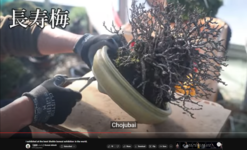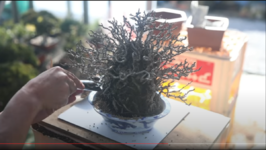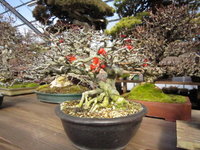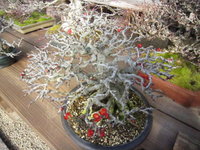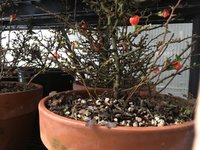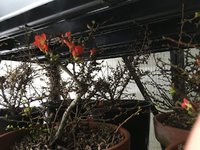They key trait that makes 'Chojubai' distinctive over other dwarf Chaenomeles is that at 25 to 35 years of age it develops the flaky bark out onto its twigs, not just its trunk. That is its "bonsai best trait"
Other dwarfs tend to have a darker, smooth bark on their twigs even into extreme old age. Though trunks may develop fissured bark, twigs will be smooth.
At one time or another I've grown most of the list of Chaenomeles available from Evergreen Gardenworks (Brent), and I found 'Chojubai' to be one of the weakest in my climate. Of the dwarfs 'Hime' and 'Kan Toyo' performed better, though are delicate in zone 5-6, and need winter protection.
Best for me in my Chicago-Milwaukee climate, were the larger shrub sizes. 'Iwai Nishiki' with its beautiful double deep red flowers, I got a true 'Minerva' from the farm, its a nice pink. Brent only has 'Not Minerva' which is more a coral color. At any rate, I've had many others, best for hardiness were the shrub sizes, ;Iwai Nishiki' , 'Minerva' and Toyo Nishiki'.. I only got white and occasional pink out of Toyo Nishiki, never got red or even red segments on the flowers. But as a white & pink it was nice.
For time and effort, the medium shrub size Chaenomeles become nicer bonsai much more quickly. The dwarfs like 'Hime' are more rewarding because they grow reasonably well, Chojubai is a challenge because it is weak and slow in my climate. It might be better in a Pacific Northwest Climate, but here its slow.


